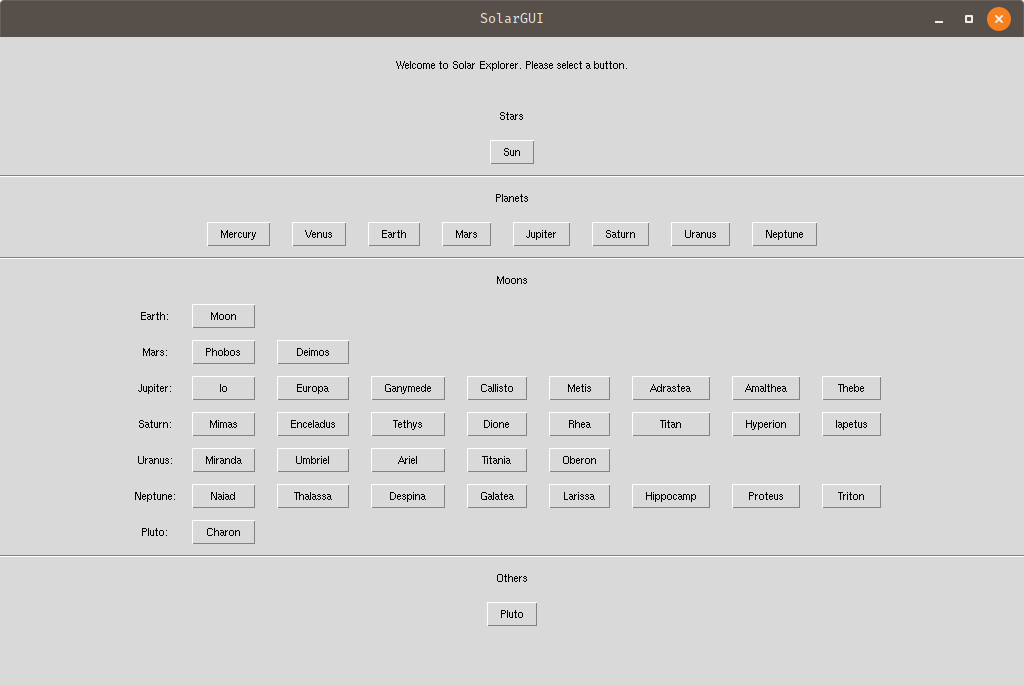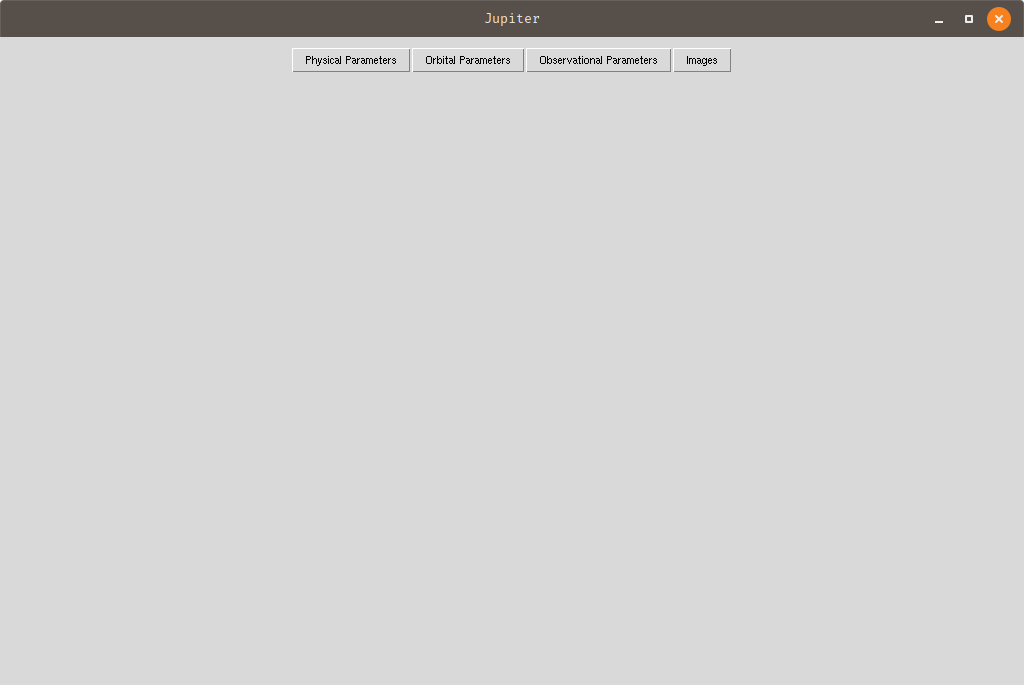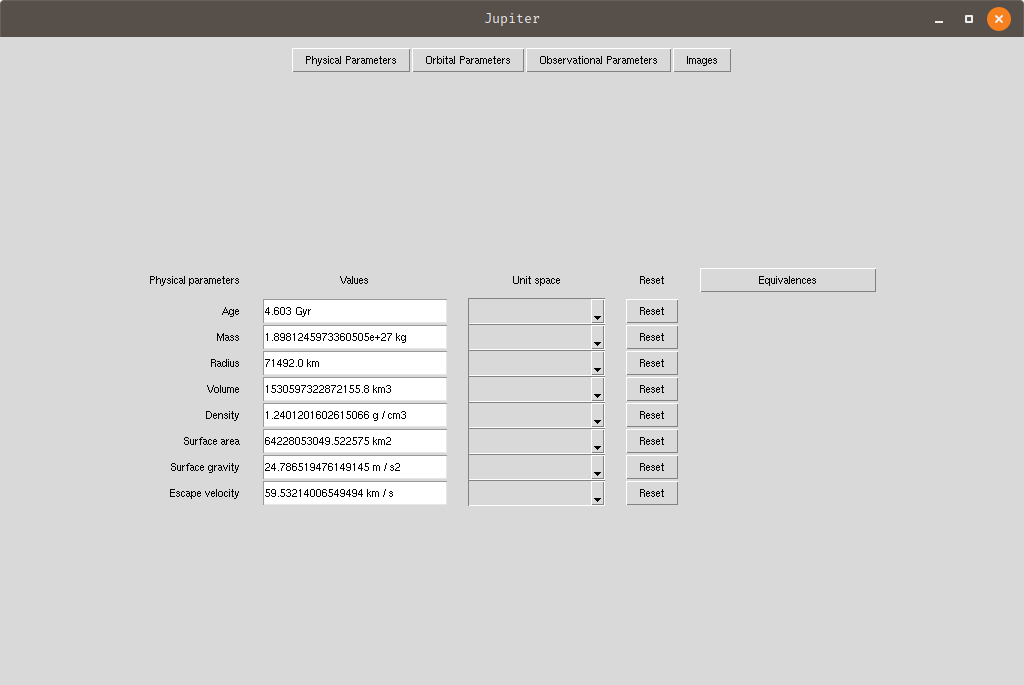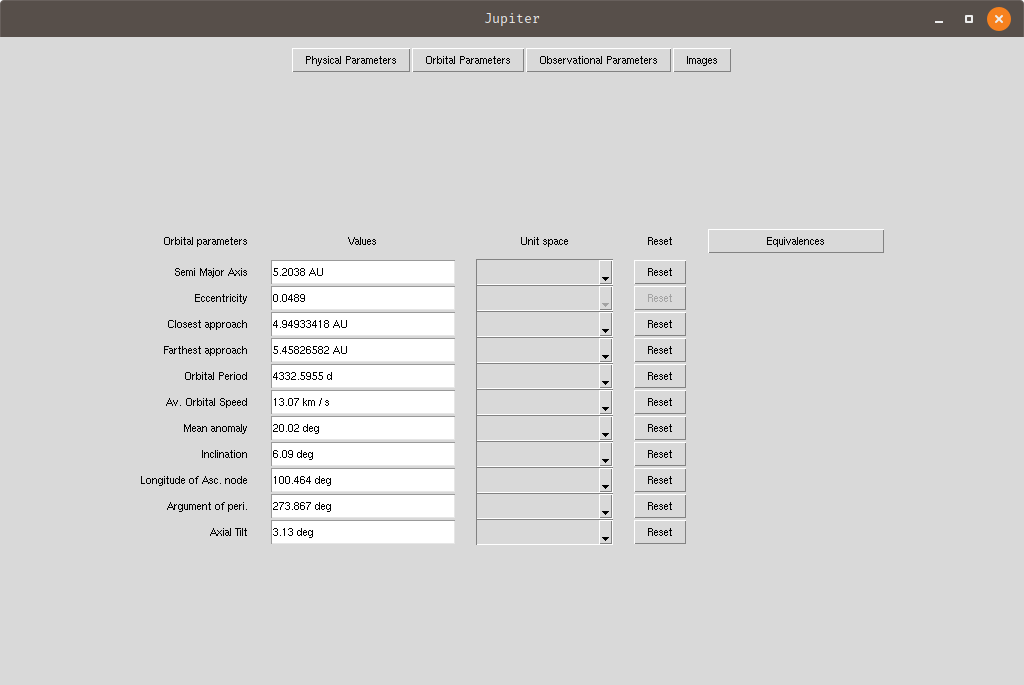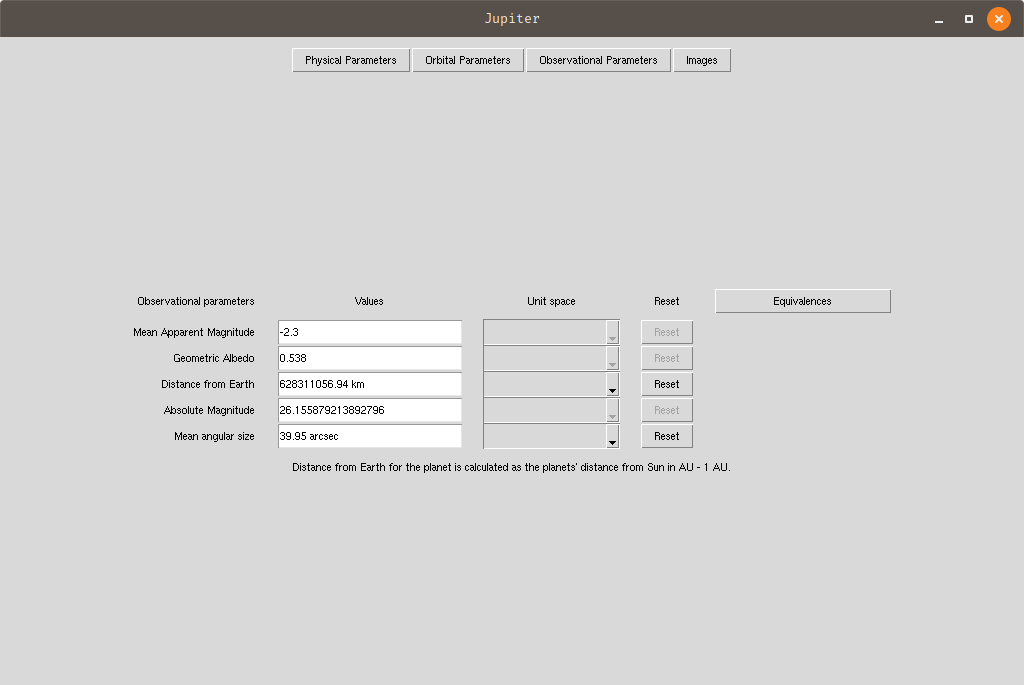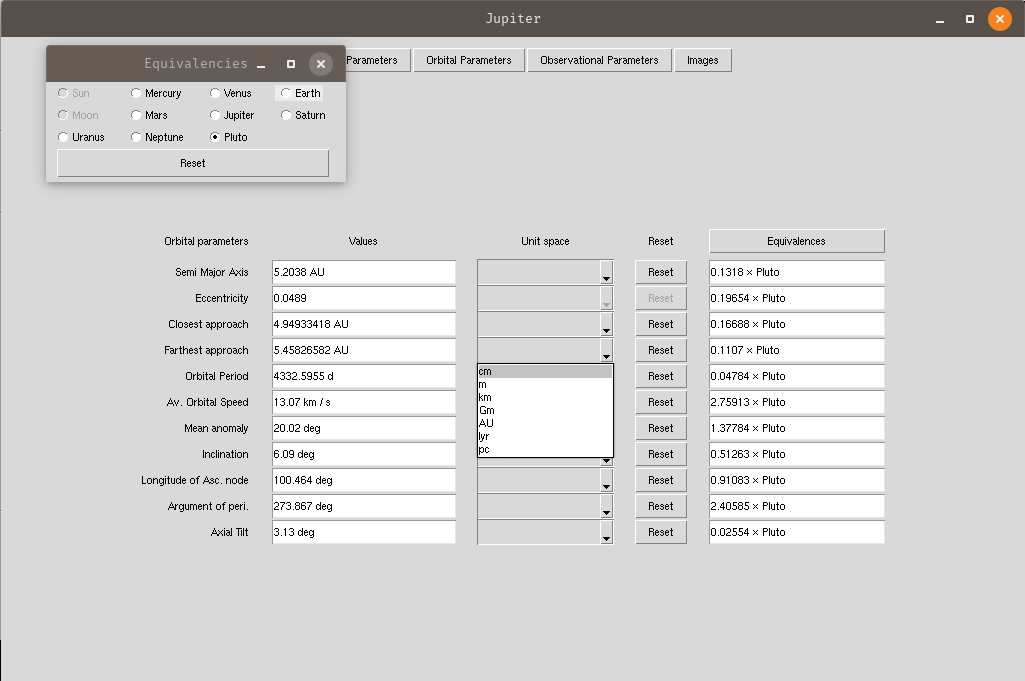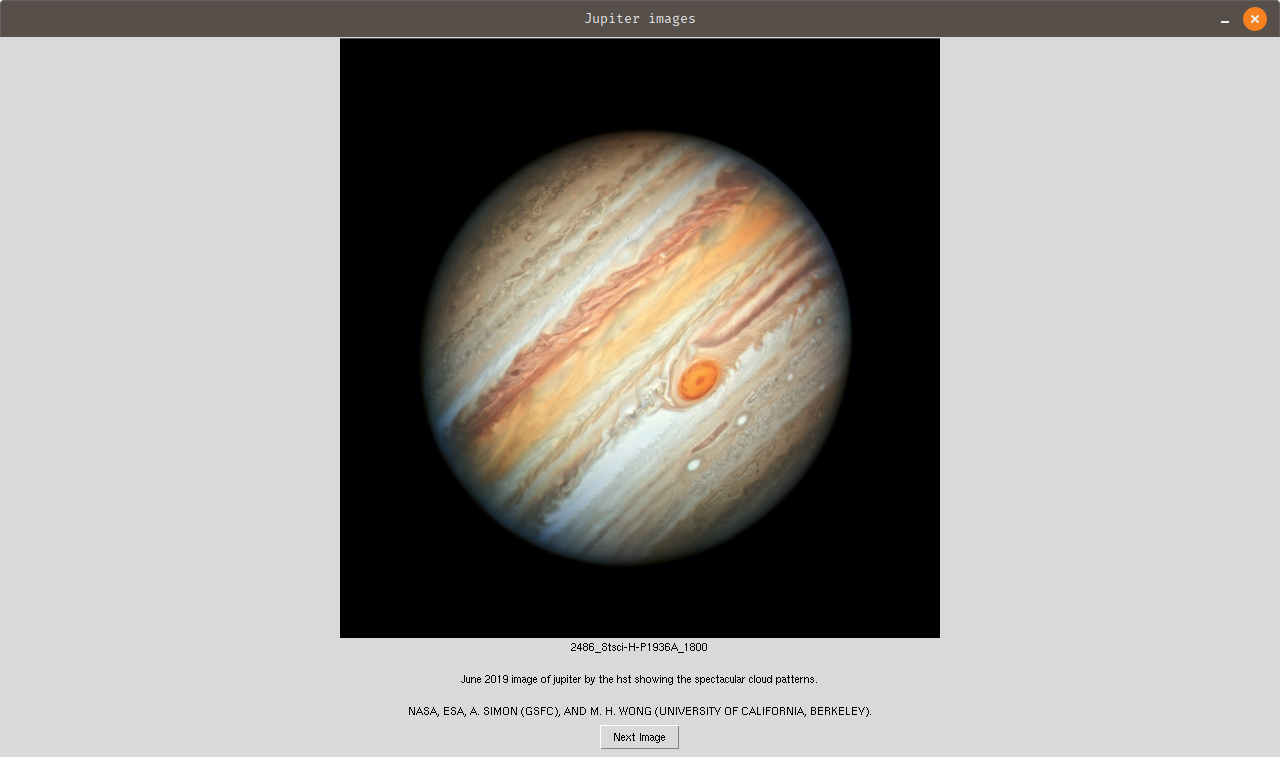A program which contains information about the solar system planets, moon, pluto, Sun, and more.
The SolarGUI is a fun little project aimed to gather planetary (and other) information. See the values of various physical parameters in standard (SI, CGS) units and celestial equivalencies.
Currently, the SolarGUI application is tested with Python v3.7, 3.8 and 3.9.
The SolarGUI is available via pip. Simply use the command,
pip install SolarGUI
The wheel can also be downloaded from this wheel link and installed via
pip install [download_directory]/SolarGUI-0.1.6-py3-none-any.whl
Once the SolarGUI has been installed, you can simply launch it from the terminal/installation environment via,
SolarGUI
The user should be made aware of the fact that not all the physical, orbital, or observational parameters are
known/available for the Moons of planets hence there will be None values when dealing with Moons of the planets.
The frontend of SolarGUI provides several buttons for stars, planets, moons, and other celestial objects.
Each button will open a new window with access to physical, orbital, observational (and optionally, images) buttons which contain information regarding the particular objects' parameters,
Clicking on the desired button will trigger a frame for the particular properties of the celestial object.
For example, if the user selects Physical Parameters, the following parameters will be listed
- age,
- mass,
- radius,
- volume,
- density,
- surface area,
- surface gravity, and
- escape velocity.
Similarly, clicking on the Orbital Parameters will trigger the frame with orbital parameters in it, such as
- Semi-major axis
- Eccentricity
- Perihelion distance
- Apehelian distance
- Orbital period
- Average orbital speed
- Mean anomaly
- Inclination
- Longitude of ascending node
- Argument of perihelion, and
- Axial tilt.
Same goes for the Observational Parameters with values,
- Mean apparent magnitude1
- Geometric albedo2
- Distance from Earth3
- Absolute Magnitude4
- Mean angular size5
The dropdown menus will show various other units of measures. The equivalencies button on the top right can be used to see the equivalent values for other celestial objects.
The images button contains a few selected images for the celestial objects (for now, only Sun and the planets including Pluto)
Footnotes
-
The mean apparent magnitude was either calculated as the mean of minimum and maximum apparent magnitude, or taken as the value given. ↩
-
Where the value for geometric albedo wasn't provided, the value of albedo was used instead. ↩
-
The distance to Earth was found by subtracting the Planet-Moon distance from the Earth-Planet distance. ↩
-
The absolute magnitude is calculated based on the following formula $M = m - 5\log10(d) + 5$ which may not be appropriate for the calculation of absolute magnitude for planets. This is planned to be fixed with the next release. ↩
-
At times when only the angular size was provided, it was taken as the mean angular size of the object. ↩




